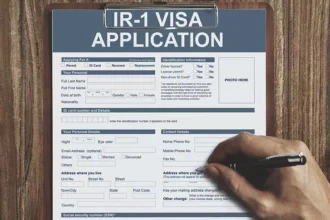Temporary Protected Status (TPS) is a vital humanitarian immigration benefit granted by the U.S. Department of Homeland Security (DHS) to nationals of countries experiencing ongoing armed conflict, environmental disasters, or extraordinary and temporary conditions. The designation allows eligible individuals from those countries to live and work lawfully in the United States for a designated period.
A redesignation of TPS is different from an extension. It means that DHS not only extends protections for current beneficiaries but also allows new eligible individuals from the designated country to apply for TPS if they meet the new eligibility cutoff dates.
Understanding how to navigate the TPS redesignation process is essential for nationals from affected countries, immigration advocates, and legal service providers. This guide explains the legal framework, application steps, deadlines, and key considerations for newly eligible individuals during a TPS redesignation.
What Is a TPS Redesignation?
A TPS redesignation happens when DHS revisits an existing TPS classification and makes two decisions:
- Extends TPS for individuals who already have it, allowing them to renew their protections and work authorization.
- Redesignates the country, setting a new continuous residence and physical presence date, allowing individuals who were not previously eligible to apply.
This move is significant because it provides legal status to many people who have arrived more recently, especially during escalations in humanitarian crises.
🔗 Federal Register Notices for TPS Designations
Legal Basis for TPS and Redesignation
TPS is authorized under Section 244 of the Immigration and Nationality Act (INA). The DHS Secretary may designate a country for TPS if conditions meet the following criteria:
- Ongoing armed conflict
- Environmental disaster, such as an earthquake or hurricane
- Extraordinary and temporary conditions preventing nationals from safely returning
Redesignation is initiated when these conditions persist or worsen and impact a broader group of nationals, often including those who entered the U.S. after the original TPS designation date.
Recent Examples of TPS Redesignations
TPS redesignations have been issued for several countries in recent years due to deteriorating conditions, including:
- Haiti (redesignated in 2021 and again in 2023 due to gang violence and political instability)
- Venezuela (redesignated in 2023)
- Afghanistan (designated and later redesignated due to Taliban takeover and humanitarian collapse)
- Sudan and South Sudan (redesignated multiple times)
Each redesignation brings a new application window for those who arrived after the original designation but before the new cutoff date.
Who Qualifies Under a TPS Redesignation?
To qualify for TPS under a redesignation, individuals must meet the new eligibility requirements outlined in the Federal Register notice.
Key criteria generally include:
- Nationality of the designated country (or stateless individuals who last habitually resided there)
- Continuous residence in the U.S. since the date specified in the redesignation
- Continuous physical presence since the effective date of TPS
- No disqualifying criminal convictions or security-related issues
It is important to note that eligibility dates change with every redesignation. For example, Haiti’s 2023 redesignation set new continuous residence and physical presence dates, which allowed more recently arrived Haitians to apply.
Step-by-Step Guide to Applying Under TPS Redesignation
Step 1: Confirm Eligibility Based on Your Country and Arrival Date
Visit the official USCIS TPS page and review the country-specific Federal Register notice. Confirm that:
- Your country has been redesignated, not just extended.
- You were present in the U.S. as of the required continuous residence and physical presence dates.
🔗 Country-Specific TPS Federal Register Notices
Step 2: Prepare Your Application Forms
If eligible, you must submit the following forms to USCIS:
- Form I-821: Application for Temporary Protected Status
- Form I-765: Application for Employment Authorization (optional but highly recommended)
- Form I-601: Application for Waiver of Grounds of Inadmissibility (if applicable)
These forms can be filed online or via paper submission to designated USCIS lockbox addresses.
🔗 USCIS Form I-821
🔗 USCIS Form I-765
Step 3: Collect and Submit Supporting Documentation
Documentation may include:
- Proof of nationality (passport, birth certificate, national ID)
- Proof of residence in the U.S. (lease agreements, utility bills, employment records)
- Proof of physical presence (flight records, school records, hospital visits)
- Criminal records, if any (disclosure is critical to avoid denial or referral to ICE)
USCIS uses these to verify eligibility and ensure applicants do not pose a security risk.
Step 4: Pay Filing Fees or Request a Fee Waiver
As of now, the filing fees are:
- Form I-821: $50
- Biometrics: $85
- I-765 (if seeking work permit): $410
You may apply for a fee waiver using Form I-912 if you can demonstrate financial hardship.
Step 5: Submit Before the Application Deadline
Redesignation periods are time-sensitive. You must submit your initial TPS application within the 180-day registration period listed in the Federal Register notice.
Late applications are rarely accepted and require proof of exceptional circumstances.
Step 6: Attend Biometrics Appointment
After submission, USCIS will issue a biometrics appointment notice. You must attend your appointment at the designated Application Support Center (ASC) to provide fingerprints and photographs.
Missing your biometrics appointment may result in application denial.
Step 7: Receive Decision and EAD (If Approved)
If approved, you will receive:
- TPS Approval Notice
- Employment Authorization Document (EAD) valid for the TPS duration
- Protection from deportation
- Eligibility to apply for Advance Parole for travel
TPS does not lead directly to a green card, but it offers temporary legal protection with work and travel rights.
Legal and Practical Benefits of Applying During Redesignation
Applying during a TPS redesignation window offers several advantages:
- Legal protection from deportation
- Work authorization
- Ability to obtain a Social Security Number (SSN) and driver’s license
- Eligibility to apply for travel documents
- Time to explore long-term legal immigration options
TPS also allows recipients to contribute to the U.S. economy and support family members both locally and abroad.
Special Considerations for Asylum Seekers and TPS
Many TPS-eligible individuals have also filed for asylum. These two processes are independent, and holding TPS does not negatively affect your asylum case.
However, TPS can serve as a temporary safeguard while you await a decision on your asylum application. It’s also possible to switch from TPS to another immigration status (e.g., employment-based sponsorship, marriage-based green card), depending on your circumstances.
What Happens After TPS Ends?
TPS is a temporary program, and recipients must prepare for life after TPS unless new designations, extensions, or alternate legal statuses are obtained.
When TPS ends:
- Work permits expire
- Deportation protections are lifted
- You may still have the option to adjust status through other legal means (if eligible)
It’s crucial to consult with an immigration attorney well in advance of TPS expiration to explore options.
Common Challenges and How to Overcome Them
Delayed Processing
TPS applications can take several months to process. You can track your case status online:
Missing Documents
If you can’t obtain a passport or birth certificate due to war or disaster, USCIS may accept secondary evidence or affidavits.
Denials Based on Criminal Record
Minor traffic violations typically do not affect TPS eligibility, but felony or multiple misdemeanors can. You may need to submit Form I-601 if requesting a waiver.
The Role of Advocacy and Community Support
Legal aid organizations, community centers, and national advocacy groups play a critical role in supporting TPS applicants during redesignation windows.
You can seek free or low-cost help from organizations such as:
- Catholic Legal Immigration Network, Inc. (CLINIC)
- National Immigration Law Center (NILC)
- American Immigration Lawyers Association (AILA)
Many offer workshops, webinars, and legal clinics.
Final Thoughts: Stay Informed, Stay Protected
TPS redesignations represent both humanitarian relief and a legal lifeline for thousands of nationals from unstable countries. By understanding how the redesignation process works, newly eligible individuals can make informed decisions, protect themselves from deportation, and lawfully work in the U.S.
If your country has been recently redesignated for TPS:
- Act promptly and file your application during the open window.
- Gather and organize your documentation early.
- Don’t wait until the last day to apply.
- Seek trusted legal advice, especially if you have complicating factors like immigration history or criminal records.
With the right information and preparation, TPS can provide crucial stability while you plan for your future in the United States.
🔗 Stay Informed on TPS Changes – USCIS News



